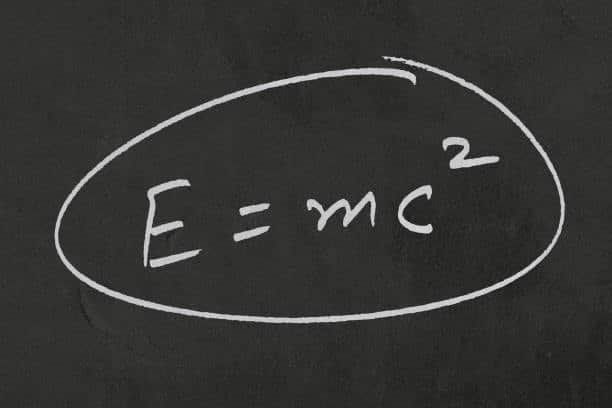CBM to KG Conversion: The Complete Guide for Accurate Weight Calculations
By Guanwutong / June 14, 2025
The calculation of converting cubic meters (CBM) to kilograms (KG) is important in shipping, logistics, construction and many industrial fields. Everything you need to know to accomplish CBM to KG conversions for different scenarios is all here, including the use of a cbm calculator.
Understanding CBM and KG: Basic Definitions and Differences

CBM (Cubic Meter) measures the volume of an object or substance by showing how much space it takes up in all directions. A cubic meter is the same as 1000 liters or close to 35.31 cubic feet. The kilogram (KG) is used to describe the actual weight of an object.
The comparison between bulk and mass for any material depends only on its density which can change greatly from substance to substance.
CBM measures space, but KG measures weight or mass. Being aware of this important quality, such as chargeable weight, is necessary for correct conversions because different materials weigh very differently for the same volume.
For instance, one cubic meter of water has a weight of 1,000 kg and the same amount of air weighs only about 1.2 kg when it is at sea level.
The Mathematical Formula for CBM to KG Conversion

This is how CBM is converted to KG: Weight (KG) equals Volume (CBM) times Density (KG/CBM).
You need to know the density of the material (given in kg/m³) to do this simple calculation. The density makes it possible to relate volumes to weight measurements.
You also need to identify the substance and look up its density to use the formula properly. After getting the volume in cubic meters and the density, just multiply them to find out the weight in kilograms. It applies to everything such as liquids, gases, solids and granular substances.
Density Values: The Key Factor in Accurate Conversions
The CBM to KG conversion depends mostly on how dense the material you have is. As the density values of substances vary a lot, using the right number for your substance is crucial.
Water is about 1,000 kg/m³, concrete is around 2,400 kg/m³, steel comes to about 7,850 kg/m³ and wood can range from 400-800 kg/m³ depending on which species you look at…
Temperature, pressure and the type of material it is, all impact density.
As an illustration, the density of liquids generally goes down as the temperature rises, but gases become more dense when there is greater pressure. When you have to convert densities for business or research reasons, always pick the most accurate density information that fits your requirements.
Common Materials and Their Standard CBM to KG Ratios
Using standard conversion ratios for often used materials makes the process of calculation easier.
Water is used to establish the equivalent, as it equals 1 CBM per 1,000 KG (a 1:1000 ratio).
The typical ratio for converting sand, at 1:1,600 (1 CBM = 1,600 KG), is closer than gravel, whose ratio is between 1:1,500 and 1:1,700.
For construction, it is known that concrete needs two consecutive units of water for every one unit of concrete and soil typically needs between two and three units of water for every one unit of soil.
Metals typically come with much bigger ratios; for example, steel has a ratio of 1:7,850 and aluminum 1:2,700. Such standard ratios give a quick way to look up for container freight station.
Step-by-Step Conversion Process with Examples
Start by getting the cubic meter volume of your materials.
If your dimensions are in a different system, convert them to meters first.
The CBM of a rectangular object is found by multiplying length, width and height (all in meters). Take the formula or a displacement approach to compute the volume of irregular shapes.
After that, determine the material you want to work with and get its density value from trusted resources.
To calculate the weight (in kilograms), simply multiply the volume by the density.
A CBM of concrete weighs 2,400 KG, so 2.5 CBM of concrete will weigh 6,000 KG. Especially for critical or business applications, take extra time to confirm and verify your density results calculate the cbm.
CBM to KG Conversion in Shipping and Logistics

Conversion from cubic meters (CBM) to kilograms (KG) is used by shipping firms to find out dim weight and decide the freight cost.
Freight forwarders and airlines often determine price by changing the volume of cargo to an equal weight. Most air carriers use the airline conversion range of 1 CBM=167 KG, but this number may differ based on where and who is shipping.
Such knowledge allows shippers to avoid overpackaging and pay less by comparing actual and volumetric weight. If volumetric weight is greater than actual weight, the freight charges will be calculated on the volumetric weight.
Because of this knowledge, companies can choose better packaging and more accurately estimate the shipping costs of a wide variety of items.
Digital Tools and Calculators for Quick Conversions
Digital tools now make CBM to KG conversions much easier. Online calculators let you enter the volume and material type to get results instantly.
Many smartphone apps include material density databases for quick reference. You can also use Excel or similar software to perform conversions for multiple materials or complex calculations.
When using any digital tool, ensure that the density values match your material and project requirements to maintain accuracy.
Industry-Specific Applications and Use Cases
The construction industry counts on CBM to KG conversions for both placing orders for materials and calculating structures.
Using these conversions, concrete suppliers plan the weight of each load and check that truck weights do not exceed safety limits.
Also, aggregate suppliers turn bulk measurements into weights for the purposes of selling and transporting goods.
Companies in manufacturing industries use these methods for managing inventory, making production plans and checking quality.
Beverage industries use CBM methods for liquids and CBM is also used by the chemical industry to deal with both liquids and solids.
Some industries include their own rules or requirements on how conversions should be done and documented maximum capacity.
Factors Affecting Conversion Accuracy
Temperature plays a big role in determining the density of liquids and gases. Density in liquids can change because of a 10-degree Celsius shift by as much as 0.3% which is important for precise work width cm x height.
The forces of pressure make a big difference to the density of gases according to ideal gas law relationships cbm in shipping. The density of a liquid may be unlike by small changes in atmospheric pressure total volume.
The purity and the type of material will impact the density. Granular particles with impurities or excess moisture or those with a different particle size distribution, may be less or more dense than average maximum cargo weight.
Age and the conditions under which something is stored may affect its properties. You might consider checking actual samples for their density before using only published official values, especially when accuracy is very important lcl ocean freight.
Troubleshooting Common Conversion Errors
One of the most frequent errors is given when people apply the wrong density for the material or condition they are interested in.
Don’t forget to check that the material and conditions you are using match the supplier’s specification sheet cbm measurement.
Many people also struggle with using the right units, double-check that every measure uses the right unit before doing your math ocean freight sea freight shipping container lcl shipments.
Errors from rounding may build up as you go through multiple steps. Try to keep your numbers accurate all the way through the calculation and rough only the answer cbm calculation.
When mixing materials, find the weighted average density for the mixture using the proportions of each component, not the density of just one component length cm x width.
Regulatory Standards and Compliance Requirements
There are industry regulations that control the way weights are calculated and documented. In order to be safe, transportation regulations set limits on how much can be transported and ask for precise weight figures cargo weighs.
It is necessary to have precise weight information on documents for both customs and safety reasons when shipping internationally freight volume.
All construction and engineering work must meet safety and building code requirements that generally depend on knowing weights accurately.
Product weight accuracy and proper documentation are obligatory in the food and pharmaceutical industries. Always check the regulations for your case and document each conversion process and the source you used gross weight.
For more detailed guidance on weight definitions and calculation in shipping, see Maersk’s Shipping Weight Guide.
To understand the documentation needed for international shipments, refer to DHL’s Guide on Preparing Packages for International Shipping.
For customs procedures and paperwork essentials, visit Maersk’s Overview of Important Shipping Documents.
It is essential to adhere strictly to both local and international regulations, including the International Maritime Organization’s Verified Gross Mass requirements, to guarantee accurate cargo weight documentation.
This compliance not only ensures smoother customs clearance but also enhances safety throughout the shipping process.
Advanced Conversion Techniques for Complex Scenarios
Some problems deal with materials that have different densities or properties that depend on temperature or are made from various layers. For temperature-sensitive tasks, employ formulas adapted for thermal expansion.
The density of a composite material is found by averaging the densities of the constituent, according to the portion each part takes dimensional weight.
Volumes of fractal or unusual shapes are often worked out by calculating an average through integration or approximations.
Professional use in physics may require using statistical tools to calculate cbm, handle errors and give confidence intervals for results obtained by conversion air freight.
Computer models and simulations are capable of exploring situations with many variables and circumstances domestic and international freight.
Future Trends in CBM to KG Conversion Technology
New technologies are making it easier and more accurate to convert users online.
Sensors within the Internet of Things (IoT) can monitor and report the density of materials that change fast. Environmental conditions and the past of materials are used by AI algorithms to predict how rough or dense they will be.
With blockchain, a company can ensure no loss of data on conversion calculations for supply chain visibility.
Work in advanced materials science is producing new materials where density can be managed at the nanometer level.
With these improvements, conversion will become more accurate and working with different materials will get simpler in several applications.
Conclusion
Being skilled at CBM to KG conversions ensures better planning, more precise cost estimates and compliance in shipping, construction, manufacturing and similar sectors. The actual calculation is simple, but realizing accuracy depends on checking the materials, the setting and all necessary guidelines.
Technology will make it easier and more correct for artificial systems to convert between bases as time goes on, but grasp of the main ideas is still necessary for professional use.
If you have any freight or logistics questions, feel free to contact GWT Shipping. We provide comprehensive, customized shipping solutions tailored to your needs so you can ship with confidence and without worry.
FAQ
CBM (cubic meters) measures cargo volume, while KG (kilograms) measures actual weight. Conversion requires knowing the material’s density.
Accurate weights are required for customs clearance, safety, and compliance with regulations like the IMO’s Verified Gross Mass (VGM).
Use the formula: Weight (KG) = Volume (CBM) × Density (KG/m³). Find the density from trusted sources for accurate results.
Yes, international and local transport regulations require verified and accurate weight measurements to prevent accidents and ensure safety.
Online CBM calculators, mobile apps with density databases, and spreadsheet software can help with quick and accurate conversions.
Air freight commonly uses 1 CBM = 167 KG; sea freight uses 1 CBM = 1000 KG; road freight varies, often around 333 KG/CBM, depending on region.
Material type, temperature, pressure, moisture content, and impurities influence density, impacting conversion accuracy.
Use correct density values per condition, ensure consistent units, verify calculations, and document each step and source precisely.

